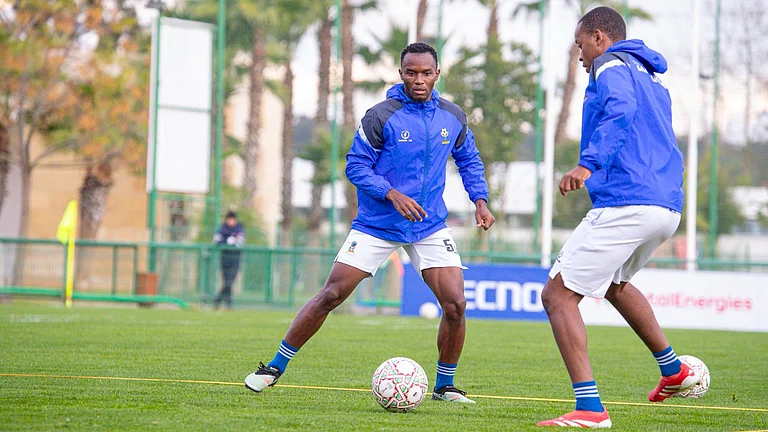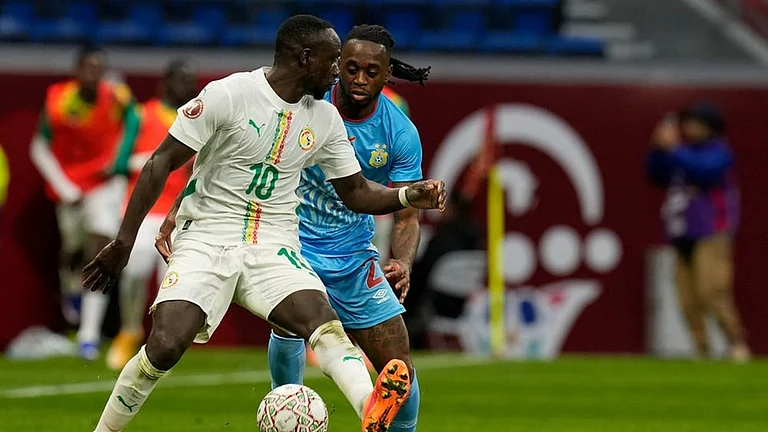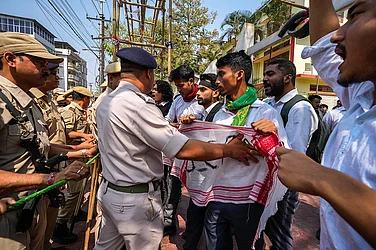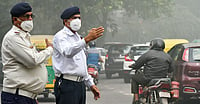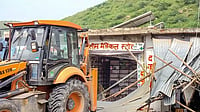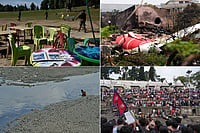In a contended space race between Russia and India, Chandrayaan-3 is deemed to have already secured the first place, following Luna-25’s unfortunate crash during pre-landing manoeuvres on Sunday, August 20. The race to be the first to land on the lunar south pole was abruptly halted when the Russian spacecraft’s effective launch into the moon’s orbit culminated in a crash. The lunar south pole is posed with enigma in lieu of the evidence of water found previously by Chandrayaan-1 in 2008. The region is believed to hold reserves of ice crystals that could be further processed to create water, crucial for for future space missions.
Luna-25’s Failure
However, Russia’s objective to execute orbit adjustment’s to lead a soft landing on moon on August 21(2 days ahead of Chandrayaan-3) to subsequently study the composition of the lunar polar regolith and the plasma and dust components of the lunar polar exosphere over a year, remains unsuccessful. In an unfortunate series of events, an ‘emergency situation’ emerged during a pertinent orbit adjustment, rendering Luna-25 incapable for the required manoeuvre.
And albeit the continued efforts from the Russian Space Agency to re-establish contact and control it was unable to, which eventually lead to its catastrophic crash onto the moon’s surface. The 800kg lander had "ceased to exist as a result of a collision with the surface of the Moon", Roscosmos said in a statement.
While the reason behind Russia’s mangled space expedition remains uncertain, the chief of Roscosmos, Yuri Borisov vowed to “stay in the lunar race”. “In no case should the lunar programme be interrupted, that would be the worst decision,” said Yuri, as reported by AFP.
While Chandrayaan-3 marks ISRO’s third lunar mission, Luna-25, launched from Vostochny Cosmodrome in the far eastern Amur region of Russia on 11 August, signified Russian Space Agency-Roscosmos’ first moon mission since 1976. In an interview with a Russian TV Channel a day after the crash, Borisov did rationale events leading to the crash, starting with the country’s five-decade-long pause in lunar exploration.
“Interrupting the lunar programme for almost 50 years is the main reason for the failure of Luna 25. The invaluable experience that our predecessors accumulated in the 1960s and 1970s was practically lost during the interruption of the programme,” expressed an agitated chief. A preliminary analysis of the lunar mission, on August 21, also revealed the reason for the spacecrafts transition into an unintended orbit-a deviation between the actual and calculated parameters of the propulsion manoeuvre that led the device to switch to an off-design orbit.
“The engine that was supposed to put the spacecraft into pre-landing orbit worked for 127 seconds instead of the planned 84 seconds. This was the main cause of the probe's crash,” Borisov informed a Russian channel, as quoted by AFP.
Other potential geopolitical reasons could be quoted as discontinued corporation by the European Space Agency (ESA), owing to the rising tensions in Ukraine. And even though Russia intended to employ the International Space Station until 2028, the ESA withdrew from any joint projects with them, including Luna 25, Luna 26, Luna 27 and the ExoMars Rover.
“They were having a lot of problems with quality control, corruption with funding,” added Victoria Samson, the Washington office director for Secure World Foundation, a nonprofit that promotes peaceful exploration of outer space.
Speculating similar reasons, the creator and publisher of RussianSpaceWeb, Anatoly Zak, voiced that the flight control system of Luna-25 had to go through many fixes, and stressed that Russia’s misadventure with an ambitious landing could have been averted if they followed the route laid out by the US, China and even India. Considering the vast and elusive array of theories lent to ascertain the cause for the crash, a special commission has been formed to look into the exact causes of the incident.
Conviction in Chandraayan-3
Amidst heightened confusion and scepticism succeeding the Russian spacecrafts crash, ISRO’s former director and in-charge of Chandrayaan-2 , K Sivan maintains conviction in the resilience India’s third lunar mission brought to fore. "As far as this Chandrayaan-3 is concerned, there were many things that changed from Chandrayaan-2. There were many technologies and many many scientific things that needed to be changed. Those are changed," the former ISRO director stated. Corrective measures had been implemented, after taking into account the intel collected from the Chandrayaan-2 mission. "Everything is indigenous,” he said about the additional systems employed in this mission.The objectives underlined for India's third lunar mission, are safe and soft landing, rover roving on the moon's surface, and in-situ scientific experiments.
The former director commented, "We have our own system and we will be establishing a soft landing without any problem. But it is a complex process,” on being asked if Luna-25’s failure were to affect India’s lunar mission. ”It is going on as per plan. It (soft landing) will be done accordingly,” Sivan further stated on Chandrayaan-3’s progress.
Although Luna 25’s trajectory allowed it to surpass India’s Chandrayaan-3 lunar lander, which launched on July 14, from SrihariKota, and had eight scientific instruments, including specialised machinery called spectrometers intended to study the lunar soil and detect surface water, Chandrayaan-3 is equipped with a lander, propulsion module and rover enables it to traverse the lunar terrain- an inventive instrument Russia was deprived of. The spacecraft has been designed to land anywhere within an expanded landing zone even in adverse conditions. It has also been equipped with more fuel, more solar panels and sturdier legs.
“If everything fails, all the sensors fail, nothing works, still Vikram will make a landing. That’s how it has been designed- provided that the propulsion system works well. We have also made sure that if 2 of the engines (in Vikram) don’t work this time also, it will still be able to land,” said ISRO chairman S Somnath.
Former ISRO Chairman G Madhavan Nair, nevertheless, dismissed any pejorative connotation to this apparent race to the moon, between Russia and India, expressing regret and extending support to Roscosmos regarding the crash "I know the (lander) module. It was ready way back in 2008. When I visited the lab (in Russia), they showed me the module. They didn't have the resources to fly (then), so it had been kept in cold storage for a long time. Now only they had resources (to launch)," he told PTI.
At the same time he emphasised on India’s venture remaining unaffected by Russian developments, 'we are not dependent on them ‘ he said, highlighting India’s self sufficiency. Moreover, ISRO on Monday released images of the far side of the moon with visible craters. The pictures were captured by the spacecraft’s Lander Hazard Detection and Avoidance Camera (LHDAC), designed to help find a safe landing location for the spacecraft.
India’s space collaboration with Russia is limited to training Indian astronauts for the Gaganyaan human space flight mission. "So, had it (Luna-25) landed, our data and their data would have been complementary," Nair added.
Conclusion
Although a successful landing has been achieved more than 20 times, the technology has not yet been mastered. Except the three Chinese landings in the past 10 years, all other victorious landings on the Moon happened between 1966 and 1976.
Chandrayaan-3’s landing would be the first successful lunar touchdown since the last attempt made in September 2019. The spacecraft was launched into space on July 14 and entered the lunar orbit on August 5, the lander module with a rover in its belly is expected to touch down on the surface of the Moon at around 6:04 pm on Wednesday. "If Chandrayaan-3 succeeds, it will boost India's space agency's reputation worldwide. It will show that India is becoming a key player in space exploration," said Manish Purohit, a former ISRO scientist.









